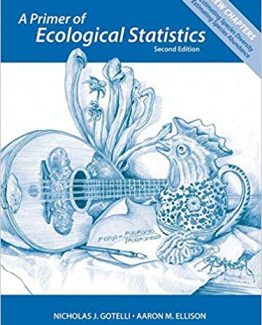The Evolution of Childhood: Relationships, Emotion, Mind by Melvin Konner, ISBN-13: 978-0674062016
[PDF eBook eTextbook]
- Publisher: Belknap Press: An Imprint of Harvard University Press (November 30, 2011)
- Language: English
- 960 pages
- ISBN-10: 0674062019
- ISBN-13: 978-0674062016
This book is an intellectual tour de force: a comprehensive Darwinian interpretation of human development. Looking at the entire range of human evolutionary history, Melvin Konner tells the compelling and complex story of how cross-cultural and universal characteristics of our growth from infancy to adolescence became rooted in genetically inherited characteristics of the human brain.
All study of our evolution starts with one simple truth: human beings take an extraordinarily long time to grow up. What does this extended period of dependency have to do with human brain growth and social interactions? And why is play a sign of cognitive complexity, and a spur for cultural evolution? As Konner explores these questions, and topics ranging from bipedal walking to incest taboos, he firmly lays the foundations of psychology in biology.
As his book eloquently explains, human learning and the greatest human intellectual accomplishments are rooted in our inherited capacity for attachments to each other. In our love of those we learn from, we find our way as individuals and as a species. Never before has this intersection of the biology and psychology of childhood been so brilliantly described.
“Nothing in biology makes sense except in the light of evolution,” wrote Dobzhansky. In this remarkable book, Melvin Konner shows that nothing in childhood makes sense except in the light of evolution.
Table of Contents:
Prologue 1
The Structure of This Book 4
Six Paradigms 8
1 Introduction 12
Some Premises 14
Some History 17
Evolution and Modification of Behavior 19
Evolution of Ontogeny in the Human Animal 26
Levels of Causation in the Explanation of Behavior 27
Part I. Evolution: The Phylogenetic Origins of Childhood
wherein we learn how the laws of evolution produced the
shape of human social and emotional development
2 Paradigms in the Evolution of Development 33
Neo-Darwinian Theory—The Adaptationist Paradigm 38
Life History Theory 45
Evolutionary Allometries 54
Heterochrony in the Phylogeny of Development 58
The Evolution of Developmental Genes (Evo-Devo) 65
Phyletic Reorganization
in Brain Evolution 69
Developmental Ethology 70
Evolutionary Developmental Psychology 72
Interlude 1: Thinking about Birdsong 75
3 Brains Evolving 78
Expansion and Organization in Brain Evolution 78
Vertebrate Body Plans and Behavioral Advances 83
The Emergence of Mammalian Brain and Behavior 86
Developmental Keys to Psychosocial Evolution 92
4 Ape Foundations, Human Revolution 100
Ape Evolution and Behavior 100
Hominin Evolution and Behavior 107
Hominin Brain Evolution 112
Evolving Human Life Histories 116
Hominin Behavior, Social Organization, and Culture 117
5 The Evolution of Human Brain Growth 124
Neonatal Status and Early Brain Growth 124
Humanizing Anthropoid Brain Growth 126
Hominin Ontogeny 128
Heterochrony in Hominin Evolution 136
Transition 1: Neurological Models of
Psychosocial Function 145
The Limbic System Model 145
The Orbitofrontal Cortex and the Somatic Marker
Hypothesis 147
The Polyvagal Model 149
The Mirror-Neuron System 151
Lateralized Higher Functions 153
Imperfect Models 156
Part II. Maturation: Anatomical Bases of Psychosocial Growth
wherein we see how neural and endocrine systems guide
the paths of development called for by natural selection
6 Paradigms in the Study of Psychosocial Growth 159
The Neurogenetics of Animal Models and Human Disease 162
Neuroembryology 172
Developmental Neuroendocrinology 178
Postnatal Brain Development 181
Developmental Behavior Genetics 190
Neurological Individuality 198
Interlude 2: Thinking about Bipedal Walking 202
7 The Growth of Sociality 206
The “Fourth Trimester” and the Presocial Baseline 207
The Rise and Fall of Early Crying 214
Smiling and Mutual Gaze 219
8 The Growth of Attachment and the Social Fears 227
Universals of Human Attachment and Social Fear 228
Animal Studies 230
Biological Mechanisms 233
9 The Growth of Language 241
A Language Acquisition Device 244
Cross-Cultural and Other Evidence 246
Biological Foundations 250
Early Anatomical Preparedness 253
The Role of Learning 255
10 The Growth of Sex and Gender Differences 260
Gender Identity 260
Sex Differences in Aggression 262
Cross-Cultural Studies 264
Neuroendocrine Foundations 267
11 The Transition to Middle Childhood 277
An Evolutionary Approach 281
Cognition in Middle Childhood 282
A Biological Model 291
12 Reproductive Behavior and the Onset of Parenting 296
Biological Changes in Puberty and Adolescence 297
Is Individual Age at Puberty a Facultative Adaptation? 298
Control of the Onset of Puberty 301
Growth and Change in the Adolescent Brain 303
The Psychological Impact of Body Changes 309
Adolescent Hormones in Sexuality and Aggression 310
Cross-Cultural Regularities 315
A Role for Romantic Love? 318
Ideals and Abstractions 320
The Onset of Parenting—Maternal Care 321
Paternal Care and the Pair Bond 325
Interlude 3: Thinking about Growing Up Gay 329
Transition 2: Plasticity Evolving 335
Selection for Plasticity and Resilience 343
Part III. Socialization: The Evolving Social Context of Ontogeny
wherein we discern the contributions of social life
to developing relationships and emotions
13 Paradigms in the Study of Socialization 349
Laws of Learning 350
Early Experience Effects and the Sensitive Period Question 353
Ethology, Field Primatology, and Sociobiology 355
Ethnology and Quantitative Cross-Cultural Comparison 358
Historiography and Historical Demography 359
14 Early Social Experience 363
Early Handling, Stress, and Stimulation 363
Postweaning Isolation and Crowding 365
Social Deprivation in Monkeys 368
The Neurobiology of Social Perturbation in Monkeys 369
Experience in the Etiology of Psychopathology 371
Early Deprivation in Human Childhood 374
15 The Evolution of the Mother-Infant Bond 381
Maternal Care in Mammals 382
Mother and Infant Primates, Including Humans 382
Mother-Infant Relations among !Kung Hunter-Gatherers 385
Mother-Infant Relations in Other Hunter-Gatherers 388
Reconstructing Maternal Care: Phylogeny and History 398
Attachment Theory and the Mother-Infant Bond 409
Interlude 4: Thinking about Maternal Sentiment 412
16 Cooperative Breeding in the Extended Family 426
Helpers at the Nest 427
Allocare in Nonhuman Primates 430
Nonmaternal Care among !Kung Hunter-Gatherers 435
Nonmaternal Care in Other Hunter-Gatherers 437
Cooperative Breeding in the Human Species 441
Normative Adoption and Fosterage in Human Societies 445
The Physiology of Alloparental Care 447
Social Context and Mother-Infant Interactions 448
Cooperative Breeding beyond Hunters and Gatherers 449
17 Male Parental Care 452
Male Parental Investment and Reproductive Success 453
Paternal Investment, Social Organization, and Ecology in
Nonhuman Species 456
The Paternal Role among !Kung Hunter-Gatherers 462
Paternal Roles in Other Hunter-Gatherers 463
Paternal Roles in Non-Hunter-Gatherers 466
Observable Patterns and Their Possible Significance 468
Subsistence Adaptation and Family Organization 471
The United States and Other Industrial Cultures 475
Dads and Cads 475
Plasticity and Its Physiological Limits 476
Interlude 5: Thinking about “Oedipal” Conflicts 479
18 Relations among Juveniles 484
Theoretical Considerations 484
Juvenile Social Relations in Selected Mammals 485
Relations among Juveniles in !Kung Hunter-Gatherers 489
Relations among Juveniles in Other Hunter-Gatherers 492
Relations among Juveniles since the Hunting-Gathering Era 495
Functional Considerations 496
Developmental Mechanisms 497
19 Play, Social Learning, and Teaching 500
The Evolution of Play 501
The Development of Human Play 504
The Evolutionary Neurobiology of Play 509
Intelligent Players 510
Play, Learning, and Culture 511
Social Learning, Imitation, and Teaching 512
Toward a Neurobiology of Social Learning 515
Teaching: Uniquely Human? 516
20 The Contexts of Emerging Reproductive Behavior 518
The Development of Sexual Behavior in Monkeys and Apes 519
Adolescence among the !Kung Hunter-Gatherers 520
Adolescence in Other Hunter-Gatherers 522
Broader Cross-Cultural Patterns of Premarital Sex 524
Parent-Offspring Conflict over Arranged Marriage 525
Adolescent Sexuality in the Industrial World 526
Secular Trends in Growth and Maturation 528
Secular Trends and Adolescent Behavior 530
Interlude 6: Thinking about Incest Avoidance and Taboos 532
21 Stress and Resilience in the Changing Family 537
Basic Stress Physiology 537
Stress in Infancy and Childhood 538
Stress in Early Life as a Signal for Facultative Adaptation 540
Stress and Resilience on the Island of Dominica 542
Mortality, Attachment, and Loss 544
Stress and Resilience in Exceptional Situations 547
Child Abuse and Neglect in Western Industrial States 550
Evolutionary Considerations in Abuse and Neglect 552
Changing Family Structure in Western Industrial States 556
Abuse, Neglect, and Adolescent Aggression 559
Stress and Coping in Human Development 560
22 Hunter-Gatherer Childhood—The Cultural Baseline 564
Generalizations and Challenges 565
The Hunter-Gatherer Childhood Model 566
Hunter-Gatherer Childhood in Evolutionary Context 568
Evaluating the Divergences 570
Conclusion: Facultative Adaptation, Discordance, or Both? 577
Transition 3: Does Nonhuman Culture Exist? 579
Defining the Extremes 580
The Approach from Material Culture 582
The Approach from Socially Learned Local Variation 584
The Approach from Teaching and Cultural Learning 586
The Approach from Language and Symbol 587
The Approach from History 589
Part IV. Enculturation: The Transmission and
Evolution of Culture
wherein we come to understand what culture changes
23 Paradigms in the Study of Enculturation 595
Laws of Learning, Expanded 596
Culture and Personality 598
The Whiting Model 605
Broader Cross-Cultural Analyses 606
Extensions and Modifications of the Model 608
Challenges to the Role of Early Experience 610
Culture and Mind 612
Interlude 7: Thinking about the Question “How?” 619
24 The Culture of Infancy and Early Childhood 624
Culture in Utero? 624
Cross-Cultural Variation in Infant Care 628
Possible Mechanisms of Influence 630
Language Acquisition and Language Learning 632
25 The Culture of Subsistence 636
Work, Play, and Cultural Transmission 637
Children’s Work in Farming Cultures 647
26 The Culture of Middle Childhood 651
Enculturation among the Gusii of Kenya 652
Enculturation Processes beyond Conventional Learning 654
Enculturation by Children 661
Inculcating Morality? 665
Children and Religion 669
27 The Culture of Gender in Childhood and Adolescence 675
Culture Stretches Biology 675
Cultural Tradition in Adolescent Development 681
28 Evolutionary Culture Theory 687
Cultural Macroevolution 687
The Meme Model and the Question of Coherence 688
Cavalli-Sforza and Feldman 691
Lumsden and Wilson 693
Boyd and Richerson 697
The Durham Model 698
Defining Culture 701
Applying the Model 702
Some Models Compared 707
Interlude 8: Thinking about Boys at War 708
29 Universals, Adaptation, Enculturation, and Culture 713
Universals of Human Behavior and Culture 713
A Culture Acquisition Device 719
A Model of Culture in Biological Context 725
Part V. Conclusion
wherein we see, as through a glass darkly, how human relationships
and emotions may actually
emerge
30 The Ultimate Epigenetic Enterprise 731
A General Theory? 732
Chaos, Self-Organization, and Complexity 733
A Theory of Generative Variation 735
Selection, Epigenetics, and Development 740
Reprise 741
Epilogue 750
References 757
Acknowledgments 917
Index 921
Melvin Konner is Samuel Candler Dobbs Professor in the Department of Anthropology and the Program in Neuroscience and Behavioral Biology at Emory University.
What makes us different?
• Instant Download
• Always Competitive Pricing
• 100% Privacy
• FREE Sample Available
• 24-7 LIVE Customer Support






Reviews
There are no reviews yet.